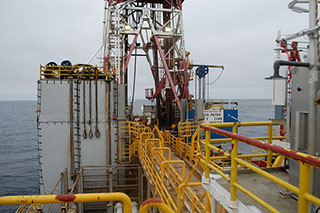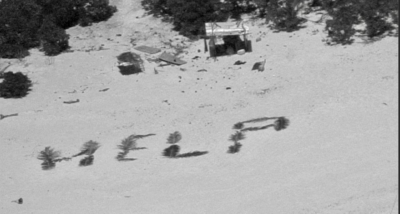Shell has been granted permission to drill for oil offshore Alaska at one of the company’s two well sites in the Chukchi Sea.
On Monday, the Bureau of Safety and Environmental Enforcement (BSEE) announced that Shell’s request to modify its Application for Permit to Drill (APD) had been granted for the well at Burger J, allowing drilling into potential oil-bearing zones. The company remains limited to the top section of the Burger V well. Shell has Transocean's high-specification semisubmersible rig Polar Pioneer under contract in the Chukchi Sea for $624,000 a day until October.
The permit modification was permitted after the offshore service vessel Fennica returned to the Arctic following repairs in Portland, Ore. The vessel carries a capping stack, a piece of emergency well-containment equipment which the BSEE requires to be on hand and deployable within 24 hours.
“Activities conducted offshore Alaska are being held to the highest safety, environmental protection, and emergency response standards,” said BSEE Director Brian Salerno. “Now that the required well control system is in place and can be deployed, Shell will be allowed to explore into oil-bearing zones for Burger J. We will continue to ensure the utmost safety and environmental stewardship.”
Shell is still prohibited from simultaneous drilling at Burger J and V in an effort to limit the effects on walruses in the region. The wells are approximately nine miles apart and the U.S. Fish and Wildlife Service requires a minimum spacing of 15 miles between active drill rigs. In addition to the BSEE monitors — who are authorized to order cessation of drilling activities in the name of safety — Shell is also required to have trained wildlife observers on all drill rigs and support vessels to minimize impacts to protected species.
The recent delays have cut into Shell’s potential window for drilling as work must be completed 30 days ahead of the anticipated start of the ice season and regulators have mandated that Shell cease drilling by Sept. 28.
“We remain committed to operating in a safe, environmentally responsible manner and look forward to evaluating what could potentially become a national energy resource base,” Shell spokesman Curtis Smith told the Houston Chronicle. “It’s possible we will complete a well this summer but we’re not attaching a timeline to the number of feet drilled. Safe, efficient operations will ultimately determine the progress we make.”
Environmental groups remain in vigorous opposition to Shell’s Arctic project. Greenpeace activists managed to delay the Fennica en route back to the Chukchi Sea in July, and several groups condemned the drilling on Monday.
“We are witnessing a growing movement against drilling in the Arctic Ocean,” Sierra Club Executive Director Michael Burns said in a statement. “There’s a 75 percent chance of a major oil spill if Shell drills in the Arctic, and a 100 percent chance of further climate disruption. That’s why hundreds of thousands of Americans have stood-up and said ‘Shell No’ to drilling in the Arctic … Granting Shell the permit to drill in the Arctic was the wrong decision, and this fight is far from over.”
A 2012 Shell Arctic drilling attempt failed amidst inclement weather and other troubles. The drilling rig Kulluk grounded off Kodiak Island in December 2012 during a tow through rough seas. Since then, the government has imposed tighter restrictions to improve safety in offshore oil and gas development. In its current Arctic exploration, Shell is being held to many of the new regulations proposed by the Department of the Interior earlier this year.
View Shell permit requests and other BSEE documents related to Alaska oil exploration.





